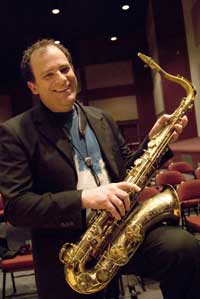This story was originally posted as a comment on the story about the Sharp Park Golf Course restoration debate
The financial excuse that San Francisco loses money and has to carry Sharp Park is disingenuous by intention and deliberately misleading. San Francisco Supervisor Mirkarimi, the legislation’s sponsor, has himself said he doubts the accuracy of the figures cited by proponents and thinks that whatever gap there may be is mere "chump change". Given Sharp Park has the lowest greens’ fees among San Francisco’s golf courses, or even in the surrounding area, a modest hike disposes of that argument. But why do that when it serves as an excuse for those intent on accomplishing their own estimable goals?
"To ‘restore’ the area would involve removing hundreds, maybe thousands of semi trucks full of fill, this in an area containing endangered species.
Goal one of the Center for Biological Diversity and affiliated groups is to restore the area to its original pristine condition for all of the stated purposes outlined by Mr. Plater. Definitely laudable. But take a moment and consider his description of how the entire area was massively filled in, and then later buffered by the addition of an enormous seawall - a 20-foot high berm stretching along the entire width of the golf course at least a half-mile long. To "restore" the area would involve removing hundreds, maybe thousands of semi trucks full of fill, this in an area containing endangered species. Who, we might wonder, would be the permitting authority for this activity?
There’s more. Laguna Salada, the fresh water lagoon snaking around the edge of the golf course receives the runoff from the entire golf course when it’s watered or raining. The berm between the lagoon and ocean keeps it all from draining, allowing only excess overflow to reach the ocean. This freshwater environment provides breeding habitat for the Red legged frog that in turn provides a food source for the San Francisco garter snake. The restoration folks want the berm breached in order to take us back to the pre-1930s when the lagoon was a brackish, read that as saline, estuary. With global warming raising sea levels three feet by the end of the century, if not faster, there go the frogs and the snakes that rely on them.
Something seems strangely amiss here with the bio fans pushing so hard in face of the problems and contradictions inherent in this enterprise. Maybe restoration would be a net benefit to the species of concern regardless, but how could we determine that beforehand? The answer of course is to do an Environmental Impact Report that studies all of the possible alternatives, including doing nothing at all, then make the best decision. It so happens that San Francisco’s Planning Department is preparing to do just that, but this process would take one or two years to conduct, and our biological friends are in too much of a hurry and too wowed by their own Big Idea to want to hear anything scientific that might contradict their own romantic and well-intentioned project. There’s momentum now, so keep on pushing and worry about the details after they accomplish their mission.
"...neither side is so much concerned about the species in question as with getting what they want."
Mr. Plater is an environmental lawyer and college professor with an enviable record suing entities on behalf of threatened species. Supervisor Mirkarimi is looking for a way out of continued nuisance lawsuits from people like Mr. Plater, so one can hardly fault him for trying to remove San Francisco from potential legal liability for Federal violations. However, it’s plain to see that neither side is so much concerned about the species in question as with getting what they want. None of this ought to be considered without condoning and paying for a thorough and complete EIR that will shed light on whether restoration in any form at all will benefit the animals and improve the overall environment or not.
We know one thing, and that is the frogs and snakes coexisted at Sharp Park for the last seventy+ years. We also know that critter protection improved substantially in recent years as the golf course was enjoined to change its practices. Ending the golf course or substantially altering it as restorationists propose may be a great idea, or it could prove hellish for the animals - remember what they say about the road to hell? The point is that we don’t know, and neither do they.
The problem in a nutshell is that there’s no science underlying any of this, only out there as an eventual goal, the science education center, etc. Should these folks succeed in pulling this off without an EIR, I hope that there will still be something left to study there one day








